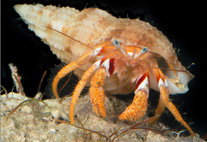Abstract
The presence or absence of teeth on the vomer and palatoquadrate bones has a long history in fish systematics. Dentition of these bones is often consistent across families, and is often included in keys to families and family diagnoses. The angelfish family Pomacanthidae has been almost consistently diagnosed as lacking both vomerine and palatine teeth (e.g., Günther 1860; Day 1875; Jordan & Fowler 1902; Herre & Montalban 1927; Fowler & Bean 1929; Pyle 2001, 2003; McEachran & Fechhelm 2005); the only exceptions I am aware of are Munro (1967) and Jones and Kumeran (1980) who note that vomerine teeth may be present or absent in pomacanthids, Blum (1988) who alludes to vomerine teeth being present in the family, and Lindberg and Krasyukova (1971) who note that weak vomerine teeth may be present in species of Chaetodontoplus Bleeker. I am aware of no accounts that mention palatine teeth in pomacanthids. During a survey of pomacanthid skeletal preparations for a study of relationships of pomacanthids to other fishes (Gill & Leis in prep.), I noticed that species of the genus Pomacanthus Lacepède, type genus of the family, consistently have a narrow band of villiform teeth on the vomer and a small patch of villiform teeth on the anterior part of the palatines (Figure 1). A broader survey of pomacanthids (25 species, including representatives of all but one of the major clades given in Gaither et al. 2014; the missing clade consists of “Apolemichthys” arcuatus, “Centropyge” colini and “C.” narcosis, for which the name Desmoholacanthus Fowler is available) revealed that these bones are otherwise edentate in the family (although only two species of Chaetodontoplus were examined).

